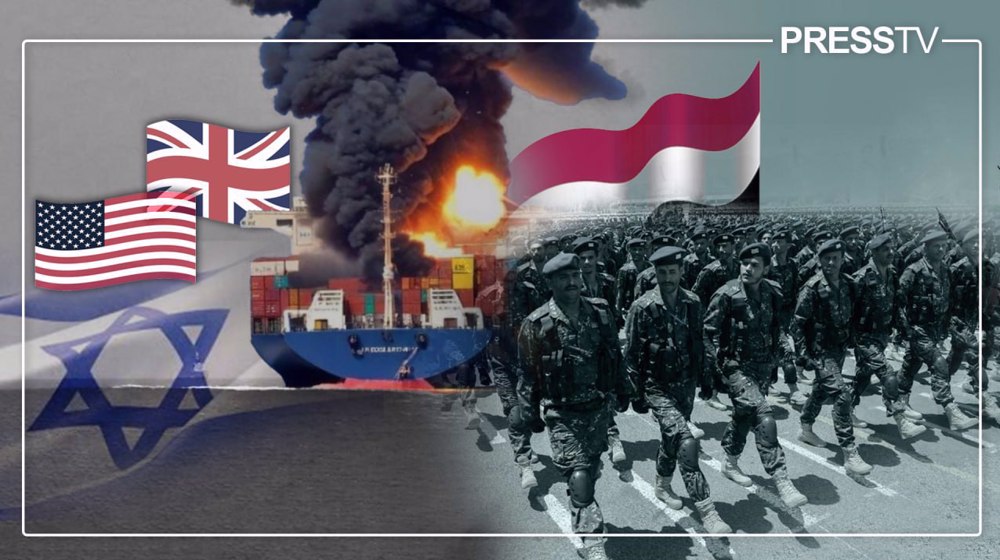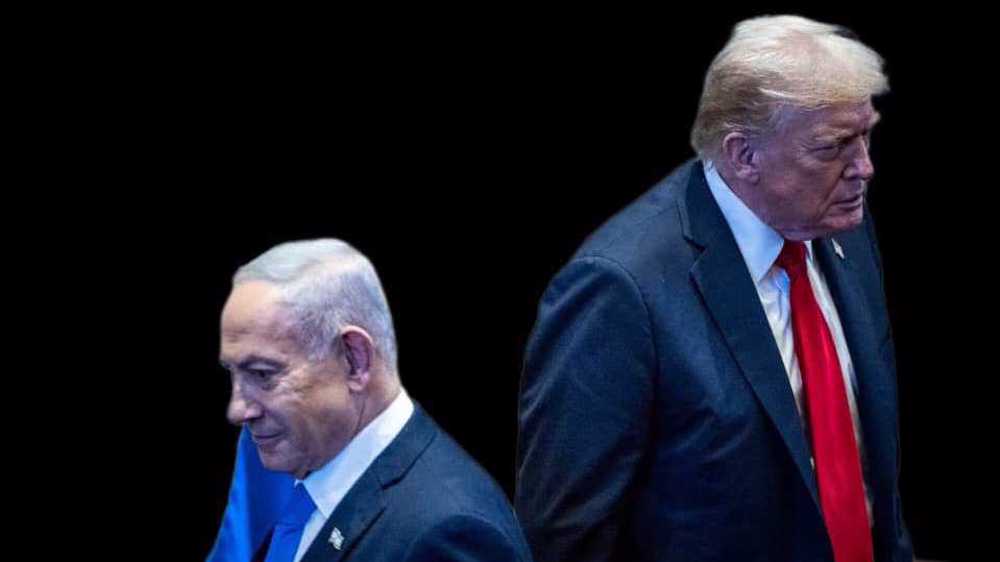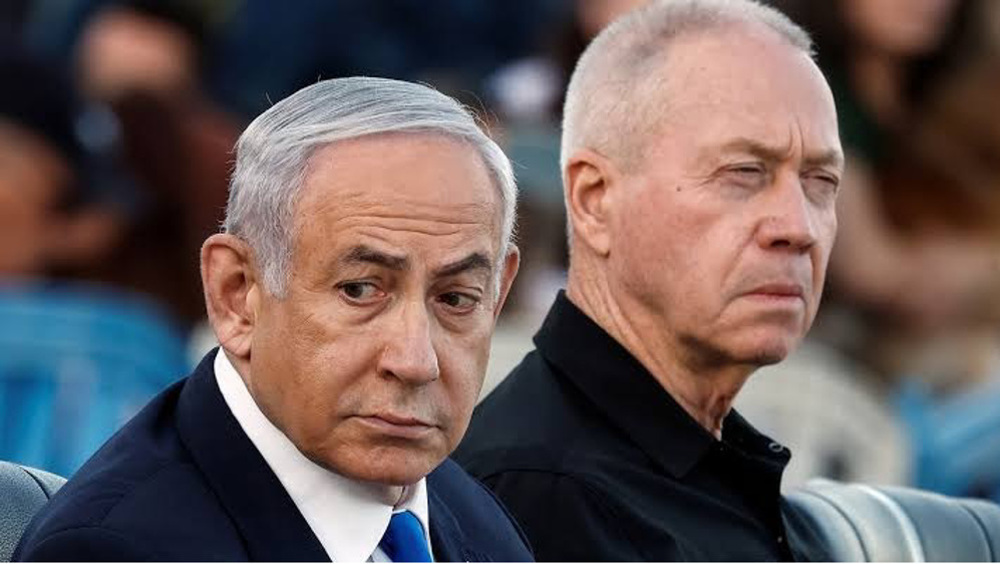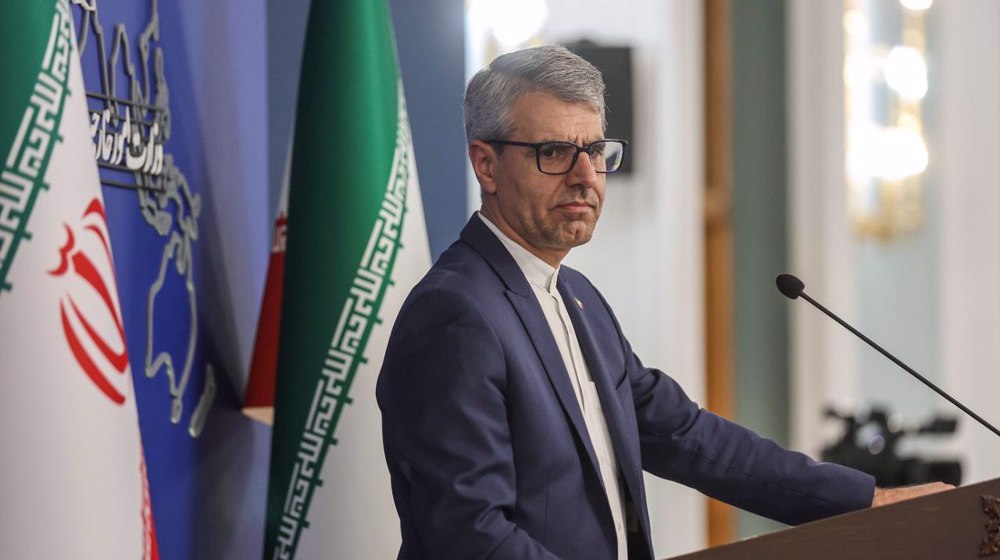Yemen defies a year of US-UK-Zionist aggression in solidarity with Palestinians
By Musa Iqbal
Exactly a year ago, US Secretary of Defense Lloyd Austin, in a much-hyped move, announced a two-pronged military campaign to subdue and bully Yemen into submission.
A full year and numerous military adventures later, the dual military operations—“Prosperity Guardian” and “Poseidon Archer”—have proved to be catastrophic failures. Or perhaps more aptly, counterproductive fiascos.
The US, true to its reputation, schemed to disrupt and dismantle Yemen’s resistance efforts in solidarity with the Palestinians in Gaza. Instead, they encountered a naval debacle unmatched since World War II.
Yemen’s resistance, led by the the Arab country's military forces, began in late 2023 with precision air raids and attacks on vessels in regional waters carrying material aid to the Zionist occupation
Leveraging their prime geostrategic position along the Bab Al-Mandab Strait, Yemen declared an unequivocal embargo on trade with the Zionist entity as a mark of solidarity with the Palestinians. All other vessels were granted safe passage, provided they abstained from commerce with the Zionist entity and its key Western backers.
Imperialist corporate Western media predictably spun Yemen’s action as a blanket blockade of the Red Sea. But this narrative is a calculated distortion. The blockade has been precise and targeted, aimed solely at ships trading with the Zionists.
This distinction is vital, as dozens of vessels continue to transit the important strait daily without incident.
In retaliation, the US launched what it called 'Operation Prosperity Guardian' in December 2023, cobbling together a coalition of navies from compliant allies like Greece, Bahrain, Finland, Norway, Singapore, and Seychelles.
The latter prompted the martyred Hezbollah General Secretary Hassan Nasrallah to quip, “I had to Google it to find out where it even is.”
Yemen’s Ansarullah leader has praised recent military operations against Israel, emphasizing the regime’s failure to achieve its goals. pic.twitter.com/SGg8iRRCSF
— Press TV 🔻 (@PressTV) January 10, 2025
But this coalition was doomed before it ever set sail. Major European powers like France, Spain, and Italy outright refused to participate, aware of its repercussions, leaving the coalition’s credibility in tatters.
Estonia contributed a solitary soldier to the imperialist cause, a gesture that bordered on satire.
Weeks later, in January 2024, 'Operation Poseidon Archer' was launched after Yemen dismissed the hollow threats from this ragtag Western military coalition.
While Operation Prosperity Guardian sought to assemble global opposition against Yemen, it floundered as a disorganized farce. Poseidon Archer, by contrast, was a direct and concentrated US-UK initiative.
The initial US-UK airstrikes against Yemen commenced on January 12, 2024, targeting both military installations and civilian infrastructure. Over the course of 2024, the US and UK together bombed Yemen on 70 separate days, with some days seeing dozens of airstrikes.
Not included in this tally are Israeli regime airstrikes, which occurred independently of the US-led aggression.
The aggressors did not confine their strikes to Yemeni military targets. Fuel depots and power stations became routine targets in a bid to cripple the poorest Arab country's economy—a classic imperialist tactic.
This strategy, previously employed by the US in Yugoslavia, Iraq, and Syria, proved utterly ineffective against Yemen.
Since the Al Aqsa Flood Operation began, millions of Yemenis have marched every Friday in solidarity with Palestine. They marched again today in Sana'a and other cities. For Yemen, support for Palestine has become a national rallying cry, uniting the country against imperialist and Zionist oppression and its Western backers.
What a GREAT Yemen!
— Press TV 🔻 (@PressTV) January 4, 2025
Hezbollah leader praises Yemeni resistance against the Israeli regime, comparing the impoverished Arab country to the wealthy Arab states for their inaction in the face of Israeli genocide. pic.twitter.com/eC8XKYajp4
To understand Yemen’s resilience, one must consider the Yemeni Ansarullah movement’s history. A revolutionary, anti-imperialist force, Ansarullah has withstood over a decade of relentless Saudi-US bombardment. Its military capabilities are forged in battle and backed by widespread popular support.
Consequently, the US-led bombings only bolstered the movement’s standing, deepening national solidarity.
Mohammed Al-Bukhaiti, a spokesperson for Ansarullah, recently reiterated: “We won’t abandon Palestine; it would mean a loss of our values.” This unyielding vow accompanies every Yemeni military statement following operations against hostile vessels or targets.
The aggressors’ actions have merely escalated Yemeni resistance.
Unsurprisingly, after the launch of Prosperity Guardian and Poseidon Archer, Yemen extended its blockade from the Bab Al-Mandab Strait and the Red Sea to encompass the entire Indian Ocean.
Yemeni forces have directly targeted US naval vessels. Using drones, ballistic missiles, and cruise missiles, Ansarullah has struck destroyers and aircraft carriers, including the USS Stockdale, USS Spruance, USS Carney, and USS Eisenhower.
They have also destroyed multiple MQ-9 Reaper drones and downed a US F-18 fighter jet. Several aircraft carriers and destroyers have sustained significant damage, forcing their withdrawal from the region.
“This is the most sustained combat the US Navy has seen since World War II—easily, no question,” remarked Bryan Clark, a former Navy submariner and senior fellow at the Hudson Institute.
To date, Yemen’s resistance blockade has disrupted 171 commercial vessels.
Meanwhile, the third-largest port in the occupied territories, Eilat, has ceased operations entirely due to the blockade. By July 2024, the port declared bankruptcy, citing Yemeni resistance as the primary cause. Once a bustling hub for trade, Eilat saw only one ship dock during the months-long blockade.
Explainer: Yemen's military used hypersonic missiles to strike Israel, which, along with the US, lacks an effective defense system against these advanced weapons.
— Press TV 🔻 (@PressTV) January 1, 2025
Follow Press TV on Telegram: https://t.co/B3zXG73Jym pic.twitter.com/wp9BxmSou5
Even Pentagon officials are astounded. In November 2024, Bill LaPlant, the Pentagon’s chief weapons buyer, admitted: “I’m an engineer and a physicist, and I’ve been around missiles my whole career… What I’ve seen from Ansarullah in the last six months is shocking.”
The US campaign has been such an unmitigated disaster that Yemen has expanded its operations beyond the blockade. A new reality now grips the Zionist entity: Yemeni hypersonic missile strikes.
Named “Palestine-2,” Yemen’s homegrown hypersonic missile has penetrated Zionist military systems, including “David’s Sling” and “The Iron Dome,” striking strategic targets in Jaffa/Tel Aviv and the Negev Desert.
Though drone and rocket attacks began in October 2023, Yemen’s true prowess emerged at the end of 2024. In December alone, hypersonic missile strikes rained down on Tel Aviv multiple times per week, forcing settlers into shelters and sowing widespread panic.
The strikes, launched under the cover of darkness, caused structural devastation and psychological turmoil. Despite their best efforts, US aircraft carriers and destroyers have been unable to intercept Yemen’s advanced missiles and drones.
In defiance of the US-UK alliance, Zionist aggression, and the inept coalition partners of Prosperity Guardian, Yemen remains steadfast in its commitment to the blockade and its resistance against the Zionist occupation.
One must recall the laughable ultimatum the US issued a year ago: cease operations in the Red Sea or face consequences. A year later, the tables have turned, and the US finds itself incapable of issuing any ultimatums.
In truth, US strategy has not evolved. Bombing campaigns targeting Yemen’s energy infrastructure have failed to break the Arab country's resolve. Even more “innovative” tactics, such as striking alleged weapons depots, have faltered against Ansarullah’s unyielding momentum.
Today, it is Yemen, not the US, that issues ultimatums. A year into the resistance, their message remains unchanged: leave Gaza, end the aggression, or face relentless resistance.
Musa Iqbal is a Boston-based researcher and writer focusing on US domestic and foreign policy.
(The views expressed in this article do not necessarily reflect those of Press TV.)
Iran: Israel's backers complicit in Gaza genocide
US issues warning to Netanyahu over Gaza ceasefire violation: Report
ICC rejects Israel's appeal to invalidate Netanyahu's arrest warrant
Imam Reza (AS) holy shrine begins accepting crypto donations
VIDEO | Newborn deaths surge in Gaza amid siege and maternal malnutrition
VIDEO | Pakistan, China conclude joint counterterrorism drills
Palestinian authorities slam ‘dangerous’ Israeli plan for 9,000 West Bank settler homes
‘Israeli actions, not Iran, fuel anti-Semitism’: Netizens react to Jewish holiday attack in Sydney













 This makes it easy to access the Press TV website
This makes it easy to access the Press TV website